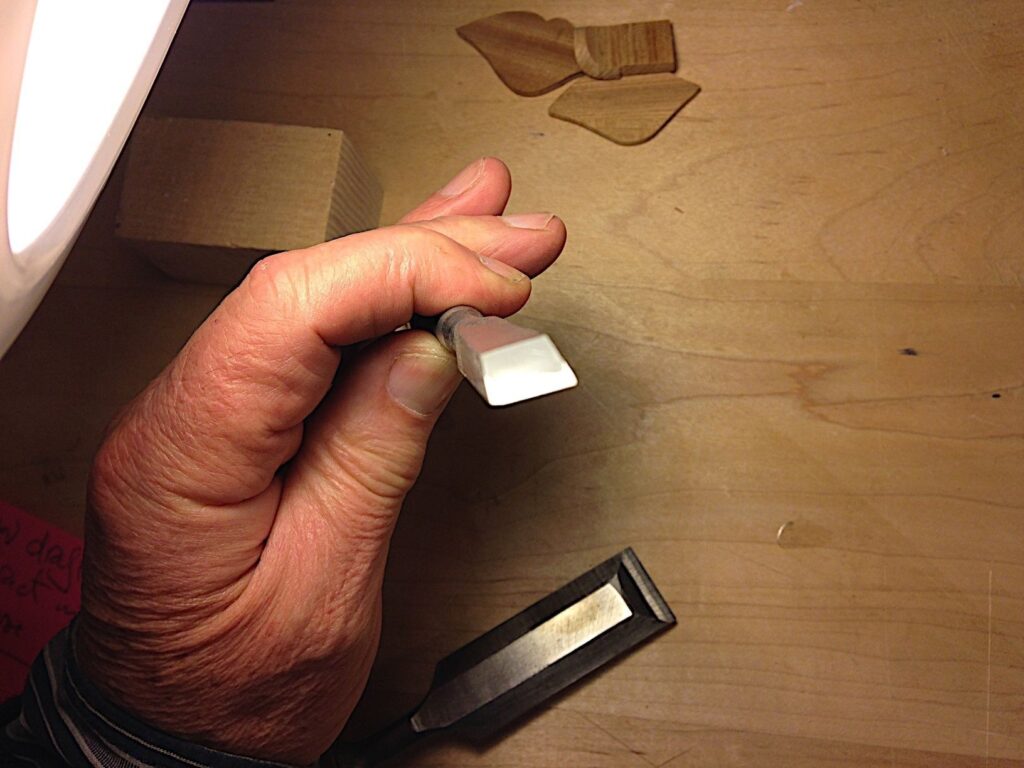Many years ago – when I was starting out as a furniture maker – I was a good and accurate, but painfully slow. There was an old guy in the workshop who never rushed but always seemed to get twice as much work done, so one day I bit the bullet and asked him, “George, how do I get faster?” He gave me a sideways look and a pretty sideways answer: “It’s all about picking up and putting down tools.” He then walked off.
I came to realise that what George told me was the distilled truth. Good workmanship is about accuracy with speed. And that is achieved, not with more tools but with fewer – along with having the right tools to hand, not in the bottom of the toolbox.
I spoke earlier about Ouchi chisels and how they form a part of my mixed bag of European and Japanese chisels. What I neglected to tell you was one of the reasons why I pick one of these up rather than something else is… the shape of the chisel.
Japanese bench chisels are slightly heavier than Western chisels which, I don’t know about you but for me doesn’t make them too attractive. I like a light, delicate, bevel-edged blade when I’m fiddling around with surfaces, but the Ouchi chisels and perhaps other well-made Japanese blacksmith chisels have a particular shape that make them really useful when pairing dovetails – and that is to do with the sides of the blades.
If you look at the sides of almost any bevel-edged European or American chisel, you’ll find a little ‘step’. The bevel is ground on the top and side of the blade and that’s okay. (Some people do it really well, like Lee Nielson and Sorby, and other people do it pretty badly.) That bevel leads to a little tiny vertical step, and if you’re cutting one in six or one in eight angled dovetails, if you’re pairing out that socket in the tail piece, you cut away with a coping saw, pair back the center to the line, chopping from either side and you’re left with that little tincy wincy bit in the corner. That damned step is going to drive you nuts! Sure, there are special chisels around that will get in that corner, but that’s just another tool. If you have a lot of time that’s fine – by all means use as many tools as you want – but a professional has to pick up and put down as few tools as possible. For a professional, the Ouchi is the answer, because it’s already angled back beautifully. The whole side of the chisel is angled to fit alongside that one in eight shoulder.
Now, I’m sure that the Japanese didn’t make these chisels with dovetail joints in mind – and they don’t do it on all of their chisels. I have some larger 30-40mm Japanese chisels that have square edges, but on the Ouchi smaller blade (and I would imagine on many of the other hand-made Japanese blades) you get this wonderful feature. It’s a feature that allows you to save time – and time is money. But also saving time and making well is good craftsmanship.


